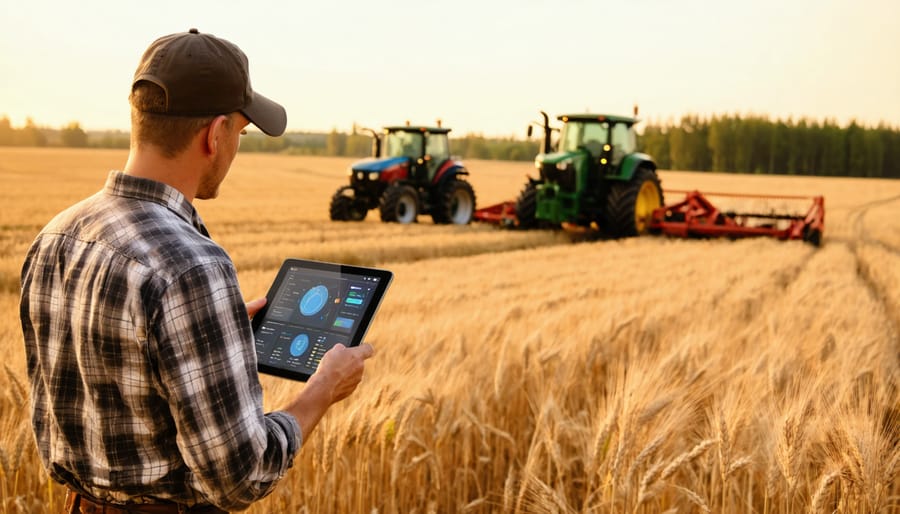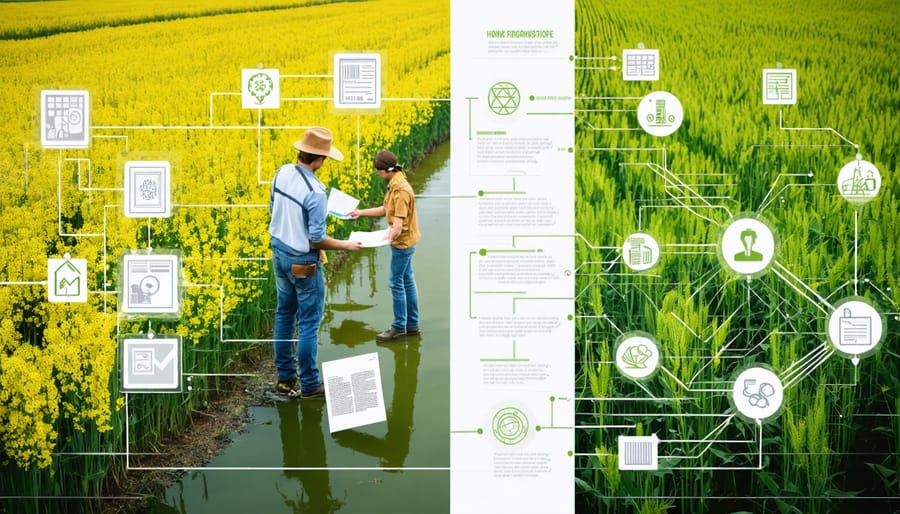Transform your agricultural workshop into a dynamic learning experience with hands-on activities that cultivate both knowledge and practical skills. From soil testing demonstrations to crop rotation planning sessions, agricultural workshops offer invaluable opportunities for farmers to master sustainable farming techniques while building community connections.
In the heart of Canadian agriculture, these workshop activities bridge the gap between traditional farming wisdom and modern sustainable practices. Whether you’re managing a small family farm in Alberta or operating a large-scale agricultural enterprise, these practical exercises provide the foundation for improved crop yields, soil health, and farm management decisions.
Our comprehensive guide showcases proven activities that have empowered thousands of Canadian farmers to enhance their agricultural operations. These carefully selected exercises range from basic soil management techniques to advanced sustainable farming practices, all designed to deliver immediate, measurable results in your farming operation.
Join us as we explore hands-on activities that will revolutionize your approach to agriculture, backed by research from leading Canadian agricultural institutions and real-world success stories from farms across the country. Let’s dig into the practical demonstrations and collaborative exercises that will help you cultivate a more sustainable and profitable farming future.
Soil Health Assessment Workshops
Field Soil Testing Demonstrations
Gather your participants in a field location and provide each person with a soil testing kit, which should include pH strips, sample containers, and basic testing equipment. Start by demonstrating proper soil sampling techniques – remove any surface debris and dig 15-20 centimetres deep using a clean spade or soil probe.
Show participants how to collect samples in a zigzag pattern across the field, taking 8-10 subsamples per hectare to ensure representative results. Mix these subsamples thoroughly in a clean bucket, removing any stones or plant material. This combined sample will give you the most accurate picture of your soil’s composition.
Guide participants through basic pH testing using test strips and a soil-water solution (1:1 ratio). While waiting for results, demonstrate how to assess soil texture using the ribbon test – wet a small amount of soil and try to form a ribbon between your thumb and forefinger. The length and consistency of the ribbon indicates clay content and soil type.
Introduce participants to nitrogen testing kits and show proper measuring techniques. Compare results across different field sections and discuss how variations might impact crop selection and fertilizer requirements. Remember to record all findings in a soil testing log, which participants can use as a template for their own properties.
End the demonstration by relating test results to practical applications, such as fertilizer calculations and crop rotation planning. Encourage participants to share their observations and discuss how soil conditions might vary across different regions of Alberta.
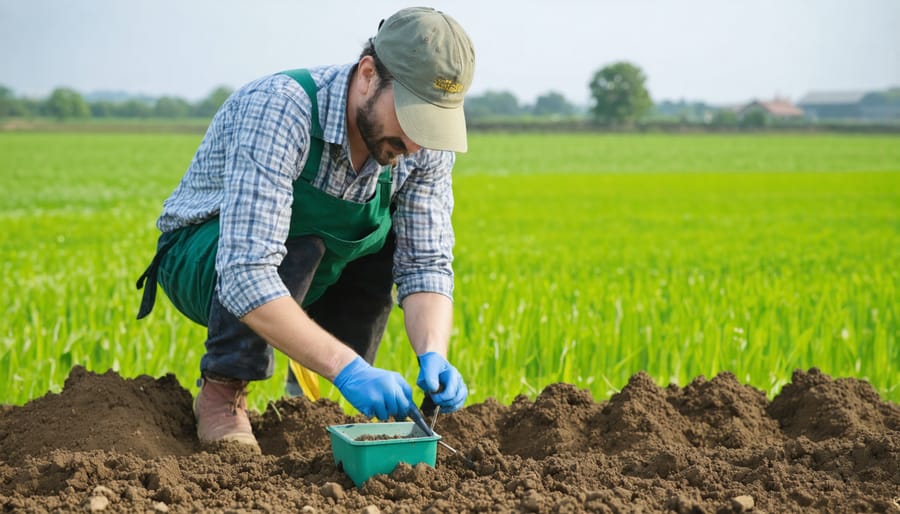
Organic Matter Enhancement Activities
Building healthy soil starts with understanding organic matter, and there’s no better way to learn than through hands-on experience. At our Alberta demonstration sites, farmers regularly participate in composting workshops where they create various compost mixtures using local materials like straw, livestock manure, and crop residues.
Our popular “compost in a bucket” activity allows participants to monitor decomposition processes over several weeks. Farmers layer green materials (fresh grass clippings, vegetable scraps) with brown materials (dried leaves, sawdust) in clear containers, making it easy to observe the transformation into rich, dark compost.
We also demonstrate vermicomposting using red wiggler worms, which is particularly valuable for greenhouse operations and indoor growing systems. Participants learn proper moisture and temperature management while getting comfortable handling the materials.
For soil amendment demonstrations, we set up test plots where farmers can compare different organic inputs. Recent trials have included comparing various manure types, green manure crops, and biochar applications. We encourage participants to collect soil samples and track changes in organic matter content over time using simple field tests.
These activities have helped many Alberta farmers transition to more sustainable practices. As Marie Thompson from Red Deer shares, “Seeing the composting process firsthand gave me the confidence to scale up our farm’s composting operation. Now we produce all our amendment needs on-site.”
Sustainable Crop Management Activities
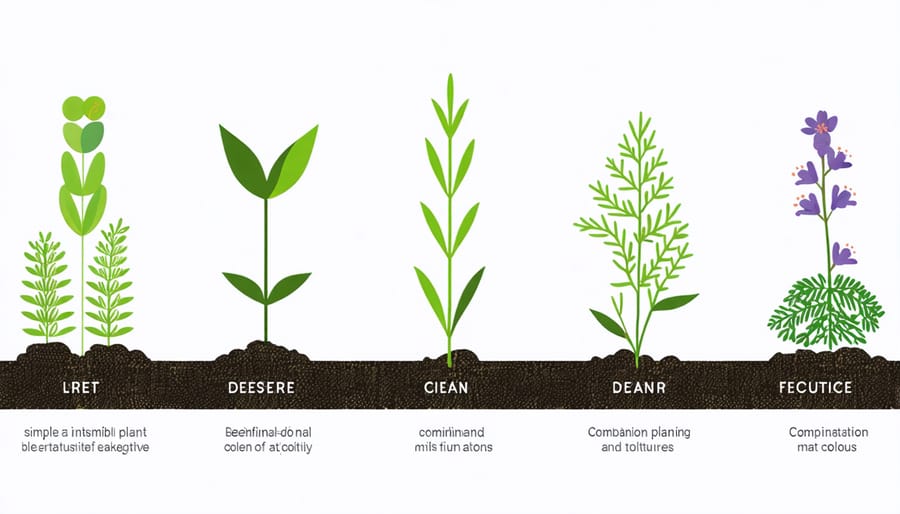
Crop Planning Exercises
Get together with fellow farmers and agricultural professionals to engage in these practical crop planning exercises designed for the Alberta growing season. Start by breaking into small groups of 4-5 people and using local climate data to create a detailed seasonal calendar. Map out frost dates, precipitation patterns, and growing degree days specific to your region.
Next, work collaboratively to develop rotation strategies using a hands-on plotting exercise. Each group receives a large paper grid representing a 160-acre field divided into quarters. Using different colored markers, plot potential crop rotations over a four-year cycle, considering soil health, market demands, and pest management.
Take this exercise further by introducing challenge scenarios. For example, how would your rotation change if canola prices dropped significantly? What adjustments would you make during a predicted drought year? These real-world considerations help build resilience into your planning.
A popular activity among Alberta farmers is the “Crop Planning Puzzle.” Using cards representing different crops, participants arrange and rearrange their selections to optimize field usage while maintaining sustainable practices. Consider factors like nitrogen-fixing legumes, cover crops, and cash crop combinations.
To make the exercise more engaging, incorporate actual yield data from local farms. This helps ground the planning in reality and provides valuable benchmarks for discussion. End the session with group presentations where each team explains their reasoning behind crop choices and rotation patterns, fostering knowledge sharing among participants.
Remember to document your planning strategies and revisit them seasonally, making adjustments based on changing conditions and market factors.
Natural Pest Control Demonstrations
Demonstrating effective natural pest control methods is essential for sustainable organic farming practices. In this hands-on workshop activity, participants learn to identify beneficial insects and implement ecological pest management strategies suitable for Alberta’s climate.
Begin by setting up observation stations with live specimens of both pest and beneficial insects common to the region, such as ladybugs, parasitic wasps, and ground beetles. Participants can use magnifying glasses to study insect characteristics and learn their roles in the farm ecosystem.
Next, demonstrate the creation of natural pest deterrents using locally available materials. This includes preparing garlic and hot pepper sprays, neem oil solutions, and companion planting arrangements. Participants get hands-on experience mixing these solutions while learning proper application techniques and timing.
Install sample trap crops and barrier methods, showing how to protect main crops using sacrificial plants like mustard or nasturtiums. Set up physical barriers such as row covers and demonstrate proper installation techniques that maintain plant health while excluding pests.
Create small-scale insectary gardens that attract beneficial insects, using native flowering plants like yarrow, goldenrod, and asters. Participants practice designing these gardens, considering bloom timing and plant spacing for maximum effectiveness.
Include practical demonstrations of monitoring techniques using sticky traps, pheromone lures, and weekly scouting methods. Encourage participants to maintain pest monitoring journals and share observations with the group, fostering a collaborative learning environment while building confidence in natural pest management strategies.
Water Conservation Workshops
Irrigation System Setup
Designing an efficient irrigation system starts with understanding your farm’s unique water needs. Begin by mapping your field’s topography and soil composition to determine optimal water distribution patterns. We’ll demonstrate three primary irrigation methods that have proven successful across Alberta’s diverse agricultural landscape.
First, let’s explore drip irrigation, which has shown water savings of up to 40% compared to traditional methods. Position the drip lines along your crop rows, ensuring emitters are spaced appropriately for your soil type. For clay soils, space emitters further apart (about 45 cm), while sandy soils require closer spacing (around 30 cm).
Modern irrigation technologies like soil moisture sensors and automated controls help optimize water delivery. Install sensors at different depths to monitor moisture levels and adjust irrigation scheduling accordingly.
For broader coverage, consider installing a low-pressure sprinkler system with rotating heads. Position sprinklers to achieve uniform coverage with minimal overlap, typically 3-4 metres apart depending on water pressure and sprinkler specifications.
Remember to include a filtration system to prevent clogging and extend system longevity. Regular maintenance checks should focus on identifying leaks, cleaning filters, and adjusting pressure regulators. Track your water usage through flow meters to evaluate system efficiency and make informed adjustments throughout the growing season.
This hands-on approach to irrigation management helps ensure sustainable water use while maintaining optimal crop yields.
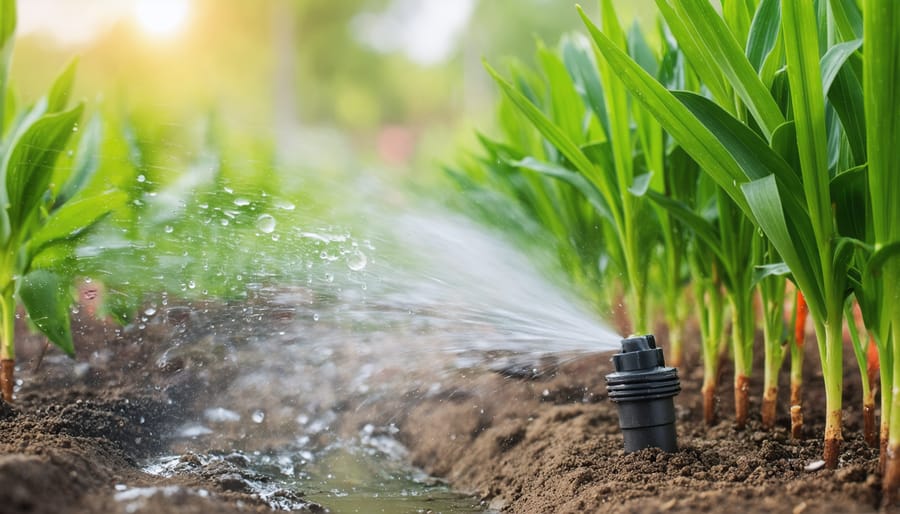
Water Quality Testing
Regular water quality testing is essential for successful agricultural operations, and there are several hands-on activities you can implement to monitor your water sources effectively. Start by collecting water samples from different points across your property, including irrigation sources, livestock watering areas, and drainage systems. Using basic testing kits available from local agricultural suppliers, you can measure important parameters like pH levels, dissolved oxygen, and electrical conductivity.
For more comprehensive analysis, try the jar test method to assess sediment content. Fill clear containers with water samples and let them stand for 24 hours to observe settling patterns and potential contamination issues. This simple yet effective technique helps identify suspended solids that could affect irrigation equipment or crop health.
Consider establishing a monthly testing schedule, particularly during peak growing seasons. Many Alberta farmers have found success with portable digital meters for quick field assessments, complemented by periodic laboratory testing for detailed analysis. Local agricultural extension offices often provide guidance on interpreting results and recommended treatment options.
When issues are identified, treatment solutions might include filtering systems, aeration techniques, or biological treatments depending on the specific water quality challenges. Document your findings in a water quality logbook to track seasonal patterns and the effectiveness of any interventions. This data becomes invaluable for long-term water management planning and can help prevent costly issues before they develop.
Remember to share your findings with neighbouring farmers, as water quality issues often affect entire watersheds. Many successful water management strategies in Alberta have emerged from collaborative community efforts.
Equipment Operation Safety Sessions
At the heart of modern farming lies the critical importance of equipment safety, and our hands-on demonstrations bring this knowledge to life. Working with experienced operators from across Alberta, participants get direct experience with common farm machinery in a controlled, supportive environment.
The sessions begin with comprehensive walkarounds of tractors, combines, and seeders, where operators highlight key safety features and maintenance checkpoints. Participants learn proper pre-operation inspection routines, including fluid level checks, tire pressure monitoring, and belt tension assessment. Special attention is given to power take-off (PTO) safety, with practical demonstrations of proper shield maintenance and safe operating distances.
Interactive maintenance stations allow farmers to practice essential skills like replacing worn parts, adjusting settings, and performing basic troubleshooting. Local equipment dealers often participate, sharing insights on new safety technologies and answering specific questions about different machinery models.
A popular component includes simulator training for complex equipment operation, where participants can practice emergency responses without risk. These sessions cover scenarios like dealing with equipment rollovers, implementing safe shutdown procedures, and managing common hazards in varying weather conditions.
We emphasize practical safety measures for seasonal operations, from spring seeding to fall harvest. Participants learn proper mounting and dismounting techniques, safe loading procedures, and best practices for equipment transport on public roads. The sessions also cover proper storage and winterization procedures to ensure equipment longevity.
Most importantly, these demonstrations foster open discussion about near-miss experiences and lessons learned, creating a supportive environment where farmers can share their knowledge. This peer-to-peer learning approach has proven particularly effective in promoting lasting safety awareness within our farming community.
Each session concludes with a review of emergency response protocols and the importance of maintaining updated safety documentation for all farm equipment. Participants leave with practical checklists and resources they can immediately implement on their own operations.
The impact of hands-on agricultural workshops extends far beyond the immediate learning experience. Through practical engagement with sustainable farming practices, participants gain invaluable skills that directly enhance their agricultural operations. These workshops foster a collaborative learning environment where farmers can share experiences, build lasting networks, and develop innovative solutions to common challenges.
The benefits are clear: increased crop yields, improved soil health, reduced environmental impact, and stronger rural communities. Workshop participants consistently report greater confidence in implementing new techniques and a deeper understanding of ecological farming principles. Moreover, the hands-on approach ensures that theoretical knowledge transforms into practical skills that can be immediately applied on the farm.
To implement these workshops in your community, start by connecting with local agricultural extension services and experienced farmers. Form a planning committee to identify specific needs in your region and develop a workshop calendar that aligns with the growing season. Consider partnering with agricultural colleges and research stations to access expertise and facilities.
Remember that successful workshops evolve with participant feedback. Regular evaluation and adjustment of activities ensure that content remains relevant and valuable. By investing in practical agricultural education today, we’re building a more resilient and sustainable farming future for Alberta and beyond. Take the first step by reaching out to your local agricultural association to explore workshop opportunities in your area.




